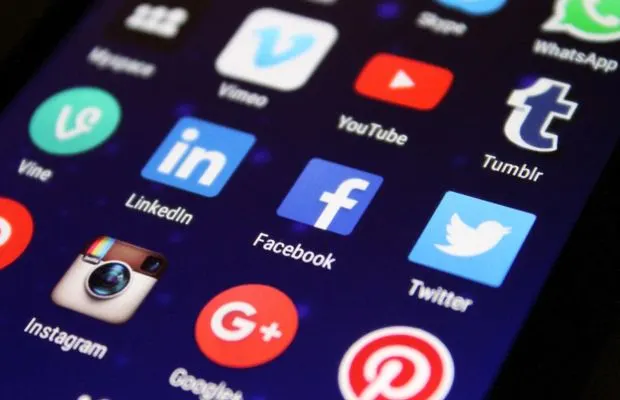How do we get invested in politics without realizing it?
POLITICS
During 19th century, the reading public grew significantly in many parts of the world and the print media was the primary source of information among the people. It was during 1920s that radio became the next primary source of news, followed by television. Now we have reached the stage where social media is taking over television.
Anybody who uses both social media and television that most of the news on the media is not reliable (the sad stage we have reached) and had become commercialized. The globalization had impacted the communication in such a way that we are flooded with different kind of information throughout our day which makes it difficult to differentiate real information from the fake.
With many countries transitioning into democracies, politics a major part of people’s life it impacts economic policies, living conditions, access to health facilities, housing and almost everything impacted by money.
WHEN IT BEGAN
Propaganda is -a form of mass persuasion-to influence the way people think and feel about the subject matter. According to Oxford Dictionary, propaganda is the spreading of ideas or information, often biased or misleading, to influence public opinion or behaviour in favour of a particular cause or political leader.
The term ‘propaganda’ was first used during First World War. ‘Propaganda’ is seen as in a negative light therefore, propaganda in democratic countries is in such way most of the times, we, people don’t even notice they are being influenced and in totalitarian governments the strict censor on all form of media protects people from realizing they are being influenced. It induces public to participate in both active and passive form on the subject of propaganda. You feel like you want to stand on the same ground on everybody else.
The media set the tone with the help of words, repetition and selection of the information shown. Most of the times even the opposite argument in the news channels is directed under propaganda to make people of both in favour, neutral or opposite view involved in the subject hereby persuading them to participate by voicing out our view. As long as most of the people believe it, other people will believe it, following mass psychology or herd mentality.
The exaggeration and fake provide emotional value that make people invested and keep up with the news, again another way to induce public to get involved.
The propaganda acts on the people with set of values and belief already established and heat up the conflict but it will only ignite hatred towards an object out of nowhere. There the views and opinion are already present in the people. It follows consistency bias, making it appear as if the opinion on the subject had been same from the beginning.
Nowadays the social media feed is set according to the information we consume (molded in a way we like), affirming our belief, values and opinion without even realizing it. So, if an information opposing our thinking does even exits, we might possibly never encounter it, in a way validating our thinking and proving us ‘right’.
With social media, the politicians can directly communicate with public rather than relying on news channels or journalists which has also made people have a deep distrust on the both as the way of communication had become much transparent and unintentionally exposing their lies.
It makes us question the so called ‘facts’. These ‘facts’ most of the times provided by the politics who are the initiator of the propaganda, and with censor it hard for people to relate ‘fact’ with the actual evidence and verify the trustability. With such a huge information and fast pace of life, people don’t even have time to think or question the information we are consuming.

PROPAGANDA DURING WAR TIMES
The demand for war related news grew during World Wars, with public using the radio and newspapers to get update about the front line and well-being of their family members in the army.
Information warfare which is somewhat related to propaganda first appeared in late 20th century. It means to influence population of different states while damaging adversary’s information and protecting their own. Propaganda is used every day but information warfare is used only during warfare.
The various techniques used in information warfare include- Command and Control Warfare (C2W), Military Deception, Electronic Warfare (EW), Operations Security (OPSEC), Psychological Operations (PSYOP)
The wartime propaganda would let the individuals to see the opposite side as an enemy with their negative characteristics and put themselves in a positive light while emphasizing their goodness. Conveying information that is beneficial for the government and reducing the importance of events that may harm the state’s interests. Thus setting the narrative the state wants.
During military operations, there is censorship over coverage of military actions and show the news that emphasize national benefit.
The use of authority in a form of high ranking official or a leader with strong favorability will provide a ‘official version’ of account which would comply with state’s view. The idea of scarcity is used to make people feel the value, for example- telling people without the war the public will lose its freedom and this will make people feel the value and support the government.
These techniques make people stand on the same side and support the state’s view.
(This article is to provide analysis and understanding of how ‘propaganda’ works during military times and filters the information.)
Citation
Kassab, M. (2020). Propaganda; the strongest weapon. orbi.uliege.be
Modern perception of “propaganda for war”: International response to hostile speech in the post-Soviet armed conflicts. Southwestern Law School.
Seitz, Jay. (2018). Propaganda and War. 5. 1-7. 10.15226/2374-6874/5/2/0015.
Elena, Kotelenets & Barabash, Victor. (2019). Propaganda and Information Warfare in Contemporary World: Definition Problems, Instruments and Historical Context. 10.2991/mplg-ia-19.2019.69.
Stockdale, M. (2018). The Press and Propaganda in War and Revolution. Taylor & Francis Online: Peer-reviewed journals.
Suiter, Jane. (2016). Post-truth Politics. Political Insight. 7. 25-27. 10.1177/2041905816680417.
Giusti, Serena & Piras, Elisa. (2021). Democracy and Fake News: Information Manipulation and Post-Truth Politics. 10.4324/9781003037385.
